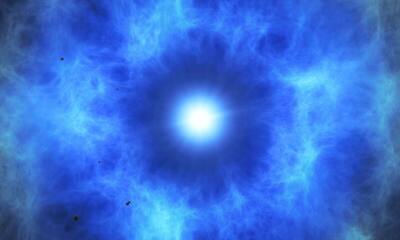Astronomers have captured the traces of a double explosion which completed the existence of a star, providing first visual proof of this previously theoretical scenario, in a study on Wednesday.
• Read also: Collision with the moon in 2032: the asteroid 2024 YR4 could cause a “nuclear explosion”
• Read also: The James Webb telescope discovers its first exoplanet
• Read also: Discovery of a giant planet orbiting around a dwarf star
The supernovae, these cataclysmic ends of certain stars at the end of their life, remain in many ways mysterious. Because the event, which sees the imploser star, is as sudden as they are immense.
From a mass similar to that of the sun, the white dwarfs concentrate their material in a much smaller volume. They are deemed to end their existence by turning slowly, to become black dwarfs – theorized without ever having been observed -, or by exploding in supernova.
“The explosions of white dwarfs play a critical role in astronomy,” noticed in a press release from the Austral European Observatory the doctoral student Priyam Das, the first author of the study published in Nature.
Especially because these events produce a number of elements, including iron, which will serve as a raw material to form new stars. Despite this “the long -standing puzzle of the exact mechanism triggering the explosion remains irresolved”, according to Mr. Das.

This undated artist’s impression handout image released by the European Southern Observatory (ESO) on July 2, 2025 illustrates the supernova remnant SNR 0509-67.5, the expanding remains of a star that exploded hundreds of years ago in a double-detonation – the first photographic evidence that stars can die with two blasts. The event left only traces, but clearly visible, of the double explosion that ended the existence of a star, according to astronomers who provided the first images in a study on July 2, 2025. (Photo by Handout / European Southern Observatory / AFP)
AFP
All the models agree on a scenario where the white dwarf accumulates matter by stealing it from a twin star, until imploding under its own mass.
But recent studies have pointed out towards a second possibility, in which the white dwarf is dragging itself in a helium blanket stolen from its partner, and which “can become unstable and detonate”, according to the press release. The shock wave of this blast would then compress the white dwarf, which would in turn explode in supernova.
Thanks to the Muse instrument installed on the very large telescope of the Austral European Observatory (ESO) in Chile, the team of astronomers has captured a “photographic instantaneous” of the remains of the event, baptized SNR 0509, and occurring around 300 to 330 years ago in the Magellan cloud, close to the Milky Way.
In accordance with theory, these images show two distinct rings of calcium, colored in blue in the images of Muse, each corresponding to an explosion.
It is a “clear indication” of what the “mechanism of” double detonation “takes place in the wild”, according to the astronomer Ivo Seitenzahl, of the German Institute of Heidelberg for theoretical studies, which led observations.
